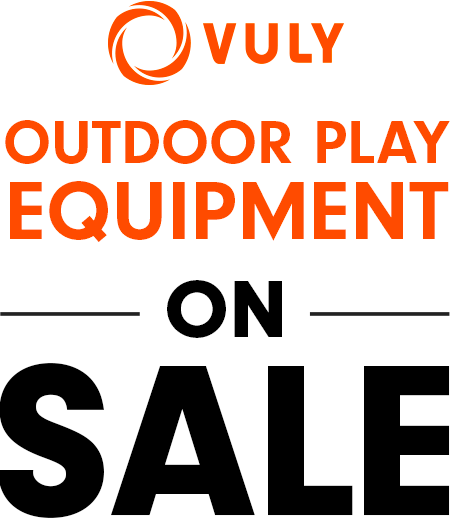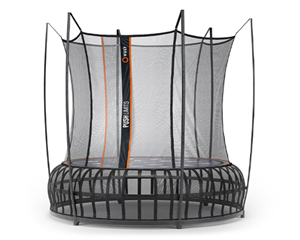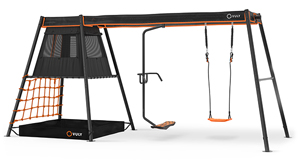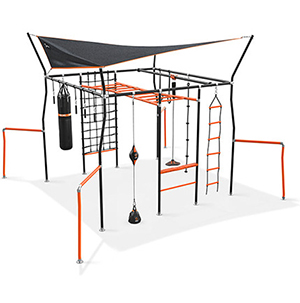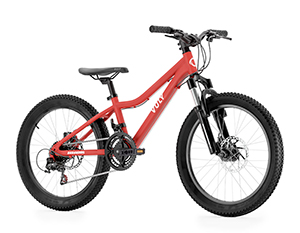As you know, our trampolines are built for kids and for playing great trampoline games.
But as a parent or guardian, you can use our trampolines for exercise as well!
We've already told you how can get the most out of your trampoline workout, but today we're looking at understanding and maximising your exercise routine.

Best Trampoline Apps for Fitness
Whether you’re looking to boost your jumps to greater heights, get yourself musically motivated or engage in a tough personal training challenge, there's an app to help you.
My Jump Trampoline App ($8.99)
If you want a detailed analysis of your bouncing capabilities, My Jump trampoline app can be useful.
Developed by sports scientists using, My Jump measures the height, airtime time, power, and force-velocity of your jump.
This is all crucial information when determining your strength and fitness level.
My Jump can also record awesome slow-motion movies of your jumps and can be export all its data.
It can also track the number of users, so your friends and family can get in on the action and compete to see who is the ultimate trampoline bouncer!
Hit Your Run - Workout Music (Free)

Exercising music is an easy way to keep ourselves from feeling fatigued or bored, and can help push us to achieve more.
When the songs are specifically chosen to match your pace and movement, you feel more motivated to go that extra mile.
Hit Your Run is a free app designed to play personalised, high-energy music to keep you motivated.
It also mixes tracks with a constant BPM, so songs perfectly complement your workout and allow you to keep your pace.
FitBit Coach (Free & Premium)
FitBit Coach is almost like carrying your own personal trainer around in your pocket.
This app provides users with a wealth of health and exercises knowledge; a variety of workouts, videos, challenges; as well as and calorie tracking capabilities.
The Premium package grants access to an array of programs suited to every fitness goal, whether you’re looking to tone or strengthen muscles, or lose weight.
Feedback and data tracking to the user enable the app to customise the program to suit you - just like a real personal trainer.
Healthy Diet - Best Diet Plan, Calorie Counter (Free)
While regular exercise is important, it's only one-half of keeping a healthy lifestyle.
The Healthy Diet app is an excellent companion in maintaining healthy eating habits.
Even better, it also comes with its own calorie-counting feature so you can track your total calories going in versus those you're burning off during your workouts.
Make sure you know the difference between healthy and unhealthy foods as well.
Best Exercise Accessories
It’s never been easier to kickstart a solid fitness regime.
We enjoy an endless range of exercise programs, classes, and sources of motivation.
We also benefit from the incredible advancements in fitness-minded technology.
Heart rate monitoring, personal training tools, workout data management—there's a piece of technology designed to support just about every element of your exercise routine.
Below are 5 accessories that can assist in your workout routines.
Fitness Wrist Watch
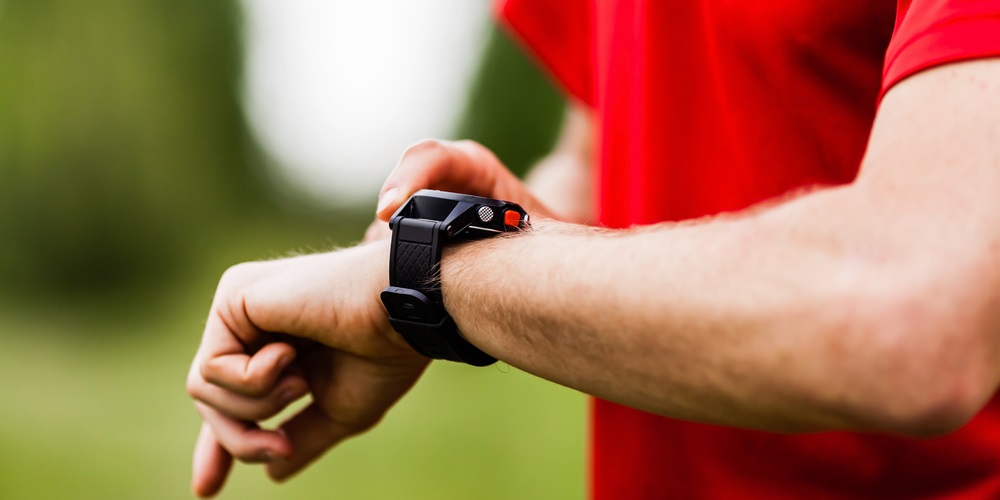
Keep track of every workout with one of the many fitness wristwatches on the market.
FitBit is one of the most popular purchases this year, but big brands like Garmin, Nike, and Microsoft have also developed these compact all-in-one exercise assistants.
They count calories you burn, the steps that you take, and your heart rate over the course of your session/day.
Some feature GPS tracking and alarms, while others sync with fitness apps for an in-depth analysis of your workouts.
Smartphone Armband
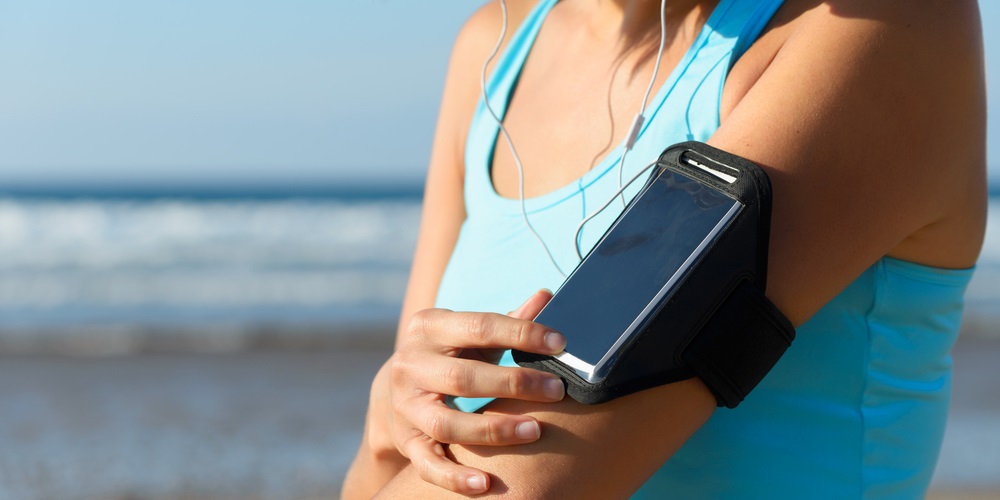
If you already have a smartphone and would rather not purchase a fitness watch, much of a watch's functionality is also available in standalone apps on your phone.
However, smartphones can be awkward to carry around during exercise, often falling from pockets or slipping from the top of exercise shorts.
Velcro smartphone armbands can make like simple. They strap onto your arm, and securely hold your phone in place.
Most brands are also fitted with a clear plastic cover that allows you to still easily navigate phone settings like changing music.
Heart Rate Monitor
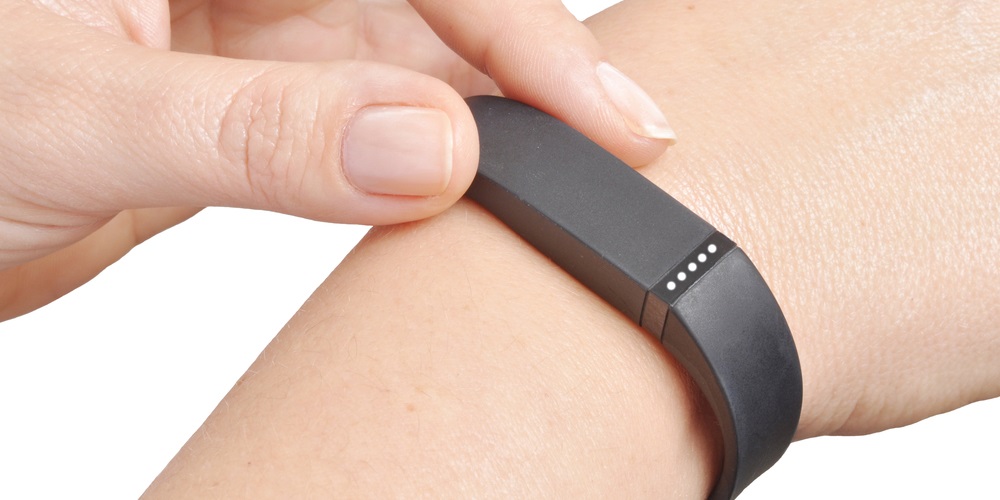
If you’re looking to track the intensity of your workout, but don't need all the additional bells and whistles, then a basic heart-rate monitor could be the ideal solution.
Whether you’re training for a long-distance event, or simply trying to improve your speed and strength, this device provides a vital insight into how hard your body is working.
This will help you determine whether you need to make changes to your regime to achieve your fitness goals.
Wireless Headphones
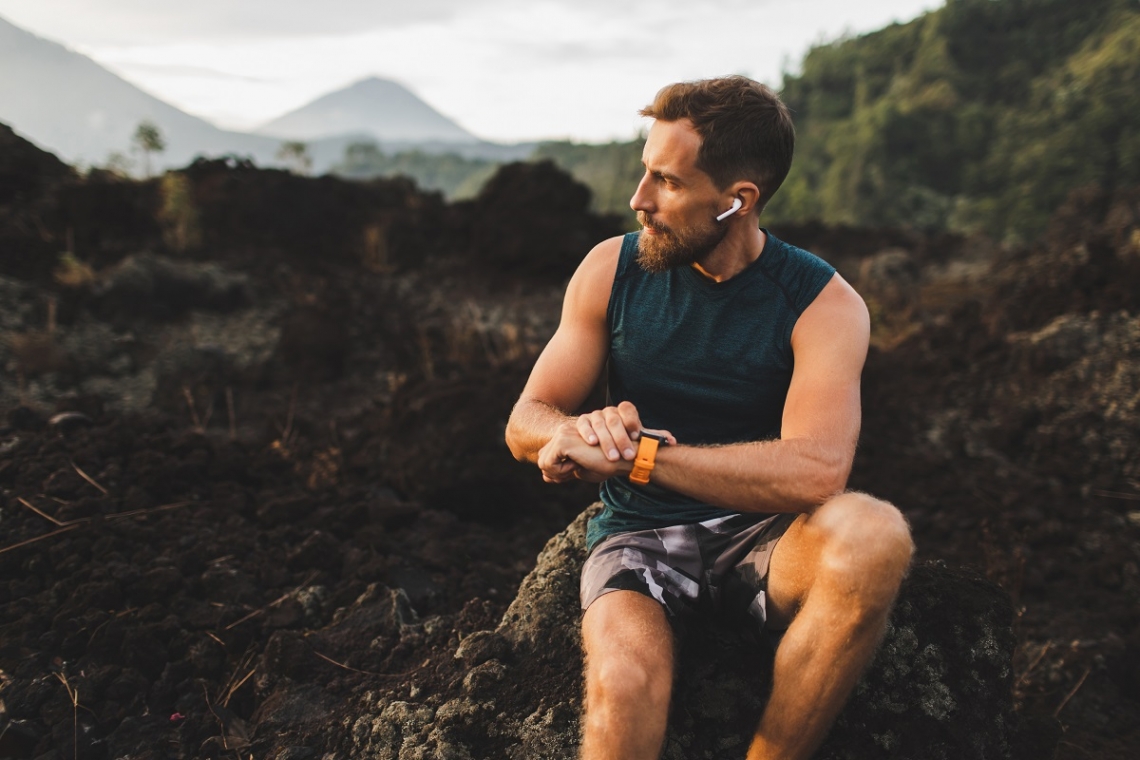
For those of us who need some fast-paced beats to accompany our workouts, long and tangled headphone wires can be a constant irritation.
The good news is that sports and electronics companies have developed great quality wireless versions of their headphones – connecting through Bluetooth.
These fantastic investments will ensure you’ll never become entangled again!
You'll want earbuds, as opposed to over-ear models, to ensure that you don’t ruin them with sweat.
Recovery Roller
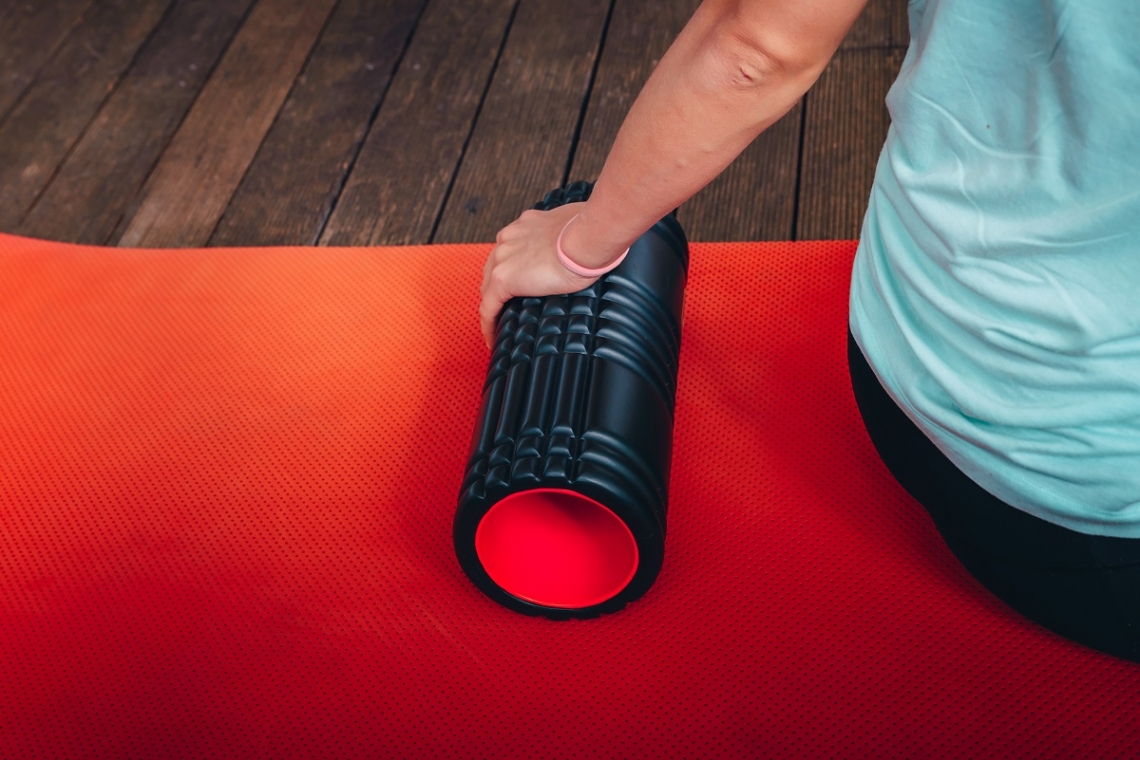
The old foam recovery roller has come quite a long way!
Today’s tech-heavy version uses high-powered pressure and vibrations to ease deep muscle tightness for the ultimate post-workout massage.
Brands like HyperIce feature 3 vibration speeds and lithium-ion rechargeable batteries.
We often forget about our bodies after the workout is done, but we need a super-powered recovery if we want super-powered results.
Understanding Your Fitness & Body Metrics
Do you want some insider knowledge of your personal fitness?
Maybe you want to smash some lifestyle goals, or you simply want to learn more about the inner workings of your body.
Calculating your own fitness metrics is a fascinating way to find out just how healthy you really are and to understand how your body compares to the average person in your age range.
Working towards a body-fat goal, or simply trying to shrink your waistline, can seem so much more achievable when you have solid figures with which to compete.
Maximum Heart Rate

Your heart rate is the best way to know just how hard your body is working during exercise.
For a quality, aerobic workout, at least 20-30 minutes should be spent within a 55-85% range of your maximum heart rate.
How do you know what our maximum heart rate is?
It's a simple calculation: 220 - your age!
For example: If I am 23, my maximum heart rate should be around 197 (220 - 23).
Therefore, during an aerobic workout, my heart rate should be between 109 and 167 beats per minute (197*0.55 and 197 * 0.85).
Keep in mind if your heart rate is too high when exercising, it could be an indicator that your workout is currently too tough for you.
Once you have determined what your exercising heart rate should be, you can ensure that every workout is hitting the mark with a heart-rate monitor!
Body Mass Index
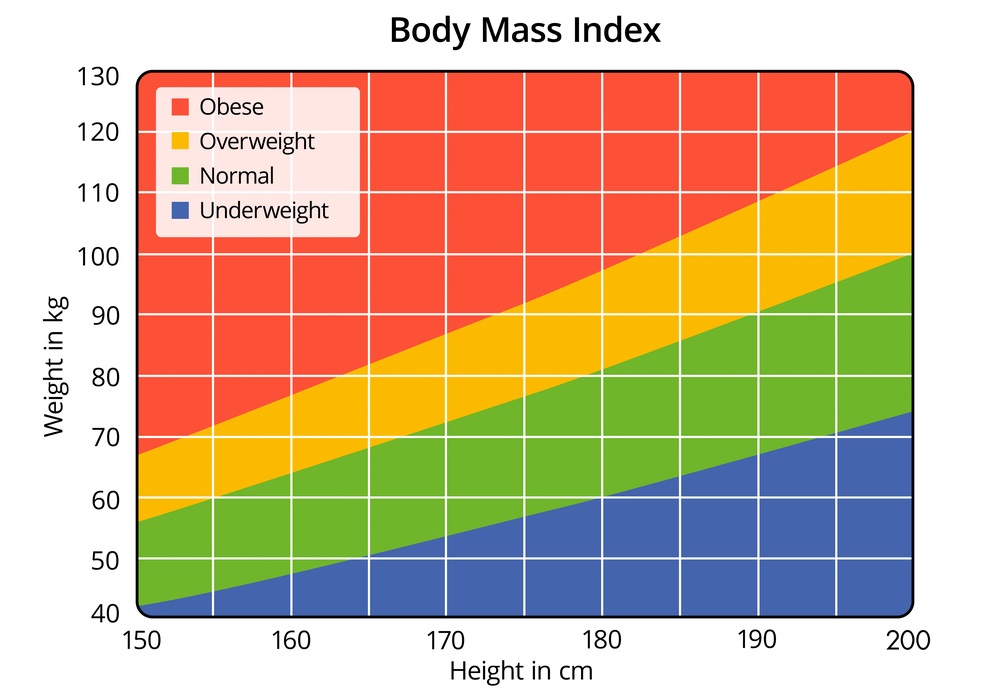
Your BMI is used as an indicator of body fat in the average adult (that is, how much of your weight is fat).
However, be aware that the standard BMI metric is far less accurate for athletes and children.
If you have too great a percentage of body-fat, and therefore sit in a higher BMI range, you are at greater risk of health complications throughout your lifetime.
The BMI tool can be helpful to determine whether you need to make lifestyle changes to improve your wellbeing, or whether you’re on the right track to a long and healthy life.
To calculate your BMI:
- Record your weight
- Record your height
- Perform the following calculation: Weight [kg] / (height [m]) * height [m])
Once you have this figure, you can see which BMI range you fall into. The generally accepted ranges, with their classifications, are:
- 18.5 – underweight
- 18.5-25 – normal weight,/li>
- 25-30 – overweight
- 30+ – obese
For example: If I am 1.7 m tall, and I weight 60 kg, my BMI will be 20.8 (60 / [1.7 * 1.7]). This puts me within the 'normal weight' range.
Waist Circumference

Waist size is an important indicator of a number of serious health concerns, such as type-2 diabetes, heart disease, high cholesterol and high blood pressure.
If you’re feeling a little more ‘jolly’ around the middle, it might be worth a quick measure up. Here’re a couple of tips to ensure an accurate result:
- Start with the tape measure at your hip bone, before wrapping it around your waist. It should be around the same level as your belly button, and perfectly horizontal
- Ensure you’re breathing normally, and that your stomach is relaxed (no sucking in!)
For men, a healthy waist sits below the 101 centimetre mark, while for the ladies, 89 centimetres is the healthy maximum.
Remember: If you’re concerned with any of your fitness calculation results, we suggest visiting a doctor or health professional.
What Else Can Affect Exercise Results
Despite committing ourselves to regular exercise and a healthy diet, some of us just can’t seem to quite reach our fitness goals.
Whether you’re unable to shift those last few stubborn kilos, you can’t reach an old personal best time or you're finding exercise unusually draining, you may be guilty of subconscious exercise sabotage!
We've spoken often about ways to boost your exercise, but what about the things that you may not even realise are affecting your performance when you tackle workout time?
Lack off Recovery
Adequate recovery time is an essential ingredient in a successful exercise plan.
It gives depleted muscles times to repair, lessens the chance of injury, and builds strength.
To recover successfully, you should be getting adequate sleep after exercising – 6-9 hours, depending on the person – fuelling your body with lean and protein-packed meals, and stretching out at the end of a big workout.
If you don't spend enough time recovering, you can actually weaken muscles that aren’t given the time that they need to rebuild themselves.
You could also cause physical and mental burnout.
If you’re finding yourself hitting the gym five days a week without results, this may be why!
Ensure that you take time out to rest and recover in between exercises.
This doesn’t have to mean living sedentarily every second day, but it does mean slowing down with gentle activities like yoga or walking.
Repetition
Do you find yourself performing the same exercise routines day in and day out?
If you're focusing only on your stomach, you should be achieving incredible results there, right?
By failing to mix up your exercise routine, you’re using the same group of muscles repeatedly.
Our bodies are clever, and they adapt over time.
An exercise your body may have found challenging the first time that you tried becomes much easier down the track.
Although this is beneficial for athletes training for marathons, cycling events, or other endurance sports, for your day-to-day exercise, it may not be the best approach.
Mixing up your routine spreads the work around your body and will give you a healthier body overall.
You could try some round trampoline exercises to add in some variety!
Lack of Fuel
Just like a car can’t run without petrol, your body can’t exercise without adequate fuel.
If you find your performance lacking during workouts, cast your mind back to what you’ve eaten that day.
You may find that your diet is unbalanced, that you aren’t eating regularly enough or you’re not drinking nearly as much water as you should be.
Many of us calorie count while trying to lose weight but taking this too far can undermine our workout regime.
Ensure that you eat a small, light snack before exercise and that you're consuming adequate vegetables and protein afterward.
Don’t forget to keep those water levels up!
Sources
Heart Foundation – www.heartfoundation.org.au
Verywell Fit – www.verywellfit.com
The Active Times – www.verywellfit.com



















































